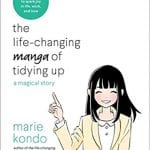So this post is really late for my #28blogging challenge. It is January, bitter cold and snowy. . .and not only am I a school and public librarian, but also a farmer. These little darlings have kept me busy!
We had an Institute Day last Tuesday in our district. I prefer to be teaching and not sitting in meetings, but this is life. For part of our meeting we watched a portion of Simon Sinek’s TED talk, “Start with Why”. I have seen this before and I always love it. It speaks to who I am as a person. I have to be invested and feel valuable to the institution I work for in order to focus my practice and use reflection purposefully. I need to believe in something bigger than my daily tasks. This got me thinking. . .
Why do just teachers need a WHY? Students need a WHY too. Students need to direct their actions to a WHY. Maybe middle school is a little young to create an entire mission statement to guide all their actions, but then after a great Digital Citizenship Twitter chat, I started thinking even more about how students could create their WHY for social media.
I am an optimist and believe that most kids do not purposefully want to hurt others. I think hurting others is a consequence of mis-managed emotions, poor self-management and a deficit in social awareness. When I teach digital citizenship I use these terms and we explore what it means to be a good person on and offline. This then leads to a discussion of the positive uses of social media. Spreading awesome. I see the awesome in my students and I want them to take that light and amplify it on social media.
WHY do I use social media? Well. . .it is really complex. I use different platforms in a variety of ways. I use Twitter to network with other educators, librarians and book minded people to share and expand new ideas for my profession. I use Facebook to stay connected to friends and family while sharing photos and information on a personal level. I really stick to these. If I am at a concert with friends, I will probably post a pic on Facebook. If I want to read about trends in education or post a lesson outcome. . .I am on Twitter. For me, this works. Although I don’t explicitly state that I will be positive and make the world a better place (something that I think students would write to make their teachers happy), I do have the goal of connecting with others. . .not alienating people.
I wasn’t entirely sold on this “social media WHY”, but I thought of framing the discussion with students in the following manner. I am guessing that many students would say that there purpose on Snapchat is to have the highest Snap Score. (If you are not familar with this it is the score given to you by Snapchat based on how many Snaps you have sent.) This is what students are going for, right? Or, how many people like your Instagram post. As adults, we need to re-frame the conversation. This is what gets teens to post quantity NOT quality. My kids do it. In the car they are Snapping their faces to friends. . .I always say ‘Who needs to see your face so bad right now?’ Maybe, they are making their friend laugh or telling some silly joke. There needs to be purpose behind the post. I want them to have fun, but I have seen too many kids use a million selfie posts as a cry for attention and lonliness fueling issues of self-worth.
WHY do kids use social media? I know that kids aren’t on social media to expand their PLN or share really great STEM projects. I would have to say that most kids might create their WHY around having fun with friends, seeing pictures of my favorite stars or unicorns or some other version of entertainment. I think that is fine. You know what they won’t say? I am on social media to make fun of other people, get in trouble with adults or post lies. This is all just a version of the T.H.I.N.K. model. I like how students could use what they learn from our lessons on the T.H.I.N.K. model and make it personal and more meaningful to them. I will continue to explore this idea with young people in the future. I am not sure of the outcomes yet.
In the meantime. . .I use Facebook to post pictures of my kids and animals and Twitter for my lessons. 



